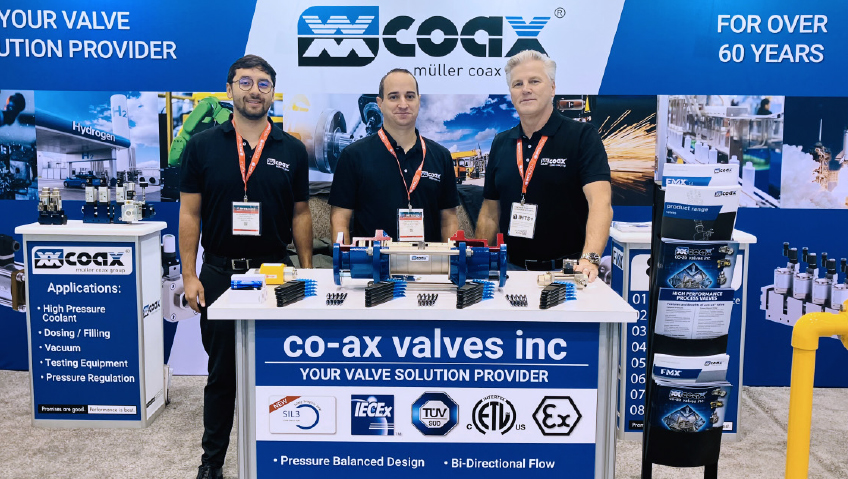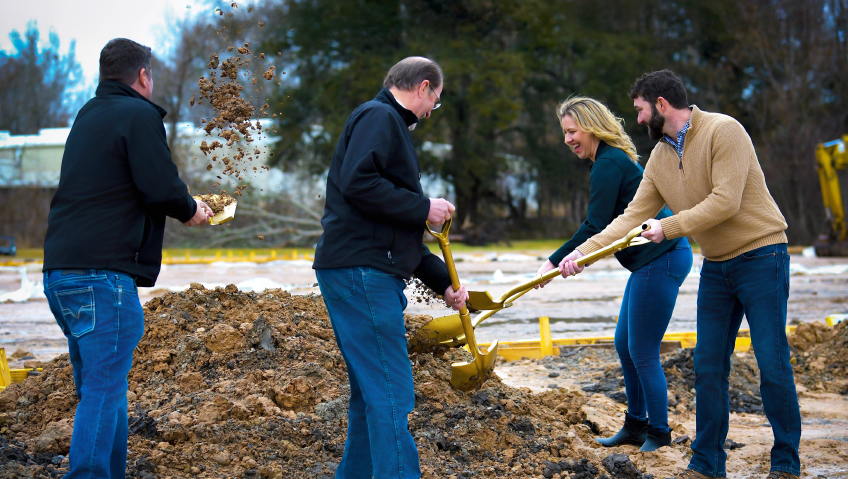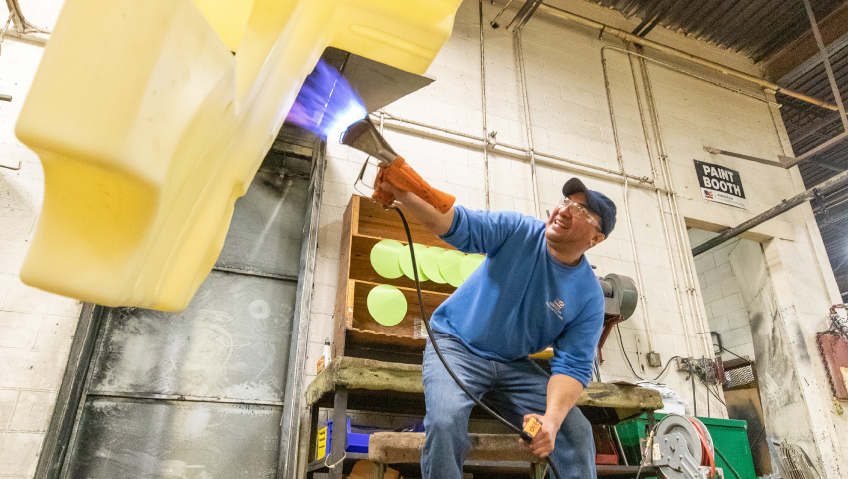As glaciers melt in the Arctic, wildfires ravage parts of Alberta and California, floods wreak havoc in India, and Europeans succumb to unprecedented heat waves, it seems that our planet is undergoing climate change. Scientists say it is caused by greenhouse gas emissions which are trapping the sun’s heat closer to our planet. Now, governments and industry sectors around the globe are working together to explore ways to control and reduce these emissions, with the goal of becoming carbon neutral by 2050.
In the manufacturing sector, many industry leaders are doing their part to manage and reduce these emissions and the challenges and threats they pose.
Globally, the manufacturing sector accounts for 12.7 percent of greenhouse gas (GHG) emissions directly from its processes (not from its energy use), according to a December 2024 report issued by the World Resource Institute.
While the largest proportion of GHG emissions by far is composed of carbon dioxide (CO2), GHG emissions also include trace amounts of fluorinated greenhouse gases (F-gases), used in the manufacture of heating and cooling products, electric power transmitters, and electronics. Meanwhile, the demand for manufactured products—products which rely in some way on iron and steel production, which contribute 4.5 percent of GHG emissions, and on concrete, which contributes a further 3.4 percent of GHG emissions—continues to grow exponentially, as emerging economies strive to match those of more developed nations.
Creating a greener steel
Steel contributes to emissions both directly through its processes which rely on coal and through its use of fossil fuels to achieve the extremely high heat levels required to transform iron into steel. But it is certainly impossible to imagine the modern world without steel—no large buildings or skyscrapers; no cars, trains, planes, or ships; no bridges; no machinery to manufacture anything else; and ironically, no wind turbines or solar energy arrays to provide green energy, because they too require steel to support them.
To decrease its emissions, the industry is considering a multi-pronged approach to solve a complex problem, including recycling scrap metal, adopting a hydrogen-based reduction process to produce iron, implementing carbon capture and storage technology on existing blast furnaces, optimizing energy efficiency, digitizing monitoring equipment to stay better informed about what is happening, and switching to renewable energy sources to power operations.
“Hydrogen-based direct reduction (HyDR) is a major contender for the future of green ironmaking without a direct release of CO2 emissions,” according to a paper published by the Max Planck Institute for Sustainable Materials. This process “relies on a multistep solid-gas reaction, where iron ore in pellet or powder form is subjected to elevated temperatures under a reducing gas atmosphere.”
There is, however, a trade-off to the use of this new technology, because “the fragmented sponge iron coming out of the HyDR process needs to be molten in order to be processed into various steel alloys. This is typically performed in an electric arc furnace (EAF), resulting in a major energy penalty.” CCUS technologies (Carbon Capture, Use, and Storage or Carbon Capture, Utilization, and Sequestration) are thus considered highly effective solutions for reducing carbon emissions in the industry.
According to an article updated in May 2024 by Global Energy Monitor, CCUS technology has multiple advantages including the fact that it can be used to retrofit existing plants to deal with the CO2, along with co-product gases including methane. However, instead of allowing these gases to enter the atmosphere, CCUS technologies separate and capture the CO2 generated during the iron and steelmaking process, which can be safely and permanently stored underground or chemically converted into other products such as plastics, concrete, or biofuel.
It has even been used in enhanced oil recovery, as has been done by the Abu Dhabi National Oil Company, since 2016, using sequestered CO2 from its Emirates Steel plant. The CO2 remains permanently sequestered in the geologic formation where the oil was trapped.
Concrete benefits from CCUS technology
Within the manufacturing sector, concrete is also a significant contributor to GHG emissions, but its carbon footprint can be reduced with CO2 utilization technologies that go beyond carbon capture. In Canada, Nova Scotia’s CarbonCure Technologies Inc. provides a system that integrates waste CO2 into fresh concrete, and in a series of chemical reactions known as carbonization, the injected CO2 becomes permanently embedded in precast concrete during the curing process, reducing the amount of cement required.
Another company, CarbiCrete, based in Montreal, uses carbonation activation to replace cement entirely by using ground steel slag, a by-product of steel production. Since no cement is required, the emissions associated with cement production are eliminated and the concrete produced with this technology is carbon negative. The technologies developed by these two companies have been adopted successfully by concrete plants in Ontario and Alberta since 2015.
A January 2025 article published by Natural Resources Canada suggests that “if the majority of brick and concrete block plants in North America implemented CO2 carbonation, CO2 emissions could be reduced by 2.5 percent annually.”
What about those F-gases?
As mentioned, GHG emissions also include trace amounts of fluorinated greenhouse gases (F-gases), which can enter the atmosphere when they are produced, transported, stored, or filled into products such a refrigeration equipment, heat pumps, air conditioners, and electronics or released directly into the air though aerosols and solvents.
Among these gases are hydrofluorocarbons (HFCs, which represent 90 percent of the total of F-gases), perfluorocarbons, and sulfur hexafluoride. Their total amount is small, but “their impact is often thousands of times higher than that of CO2,” according to a report released by the European Parliament. “These manmade substances were initially introduced in the 1990s to replace ozone-depleting substances (ODS) but were found to trap heat from the sun and make the planet warm up even faster than CO2.”
It seems that the cure was worse than the disease, because not only is their impact higher than that of CO2, F-gases remain in the atmosphere much longer. By 2012, Europeans were sounding the alarm. The European Parliament and the Council of the European Union has taken the lead to regulate these gases, beginning with the 2014 F-gas Regulation, and in February 2024 with the F-Gas Regulation (EU) 2024/573, which seeks to phase out HFCs by 2050.
Manufacturers making an impact
Shortly after his second inauguration on January 20, 2025, President Trump signed an executive order entitled “Putting America First in International Environmental Agreements” to withdraw the U.S. from the Paris Agreement, which seeks to reduce carbon levels to net zero by 2050. He had also withdrawn from the agreement in his first term, with the U.S. rejoining in 2020 following an executive order signed by President Biden.
While the Paris Agreement’s goals are lofty, and may not be reached by 2050, we are impressed by the corporate responsibility of manufacturers in both the U.S. and Canada, the latter of whom is a signatory to the agreement. Over and over, these manufacturers have proudly told us how they are working to reduce their GHG emissions, either through innovative processes or through products which will assist their customers in reducing emissions.
In this issue, we speak with Michigan Sugar Company’s President and CEO, Neil Juhnke, who told us that, since 2002, when it became a grower-owned cooperative, the company has cut its energy consumption by more than 40 percent and achieved a total reduction in annual carbon emissions of 150,000 tons. It has also invested in new technology to ensure zero waste from production is going into landfill and in research to produce higher quality seed. This has doubled the size of the sugar beet crop and significantly increased its sugar content without requiring additional acreage and additional passes by agriculture equipment.
In July of last year, Hernán Dominguez, Vice President of Sales at Hazard Control Technologies, based in Fayetteville, Georgia, told us how the company had invested heavily to develop the F-500 Encapsulator Agent, which is revolutionizing industrial fire-fighting technology. These fires, including slow burning fires in scrapyards and recycling plants, can wreak atmospheric havoc, releasing toxic smoke from various metal alloys, rubber tires, plastics, and lithium batteries, which this patented product can extinguish when water and traditional foam cannot.
In April 2024, we spoke with Andrew Mutch, President of Michelin North America (Canada) headquartered in New Glasgow, Nova Scotia, about Michelin’s Greener Freight Program and how its Canadian plant as well as ones in the U.S. have invested in technology to reduce the rolling resistance of tires used on transport trucks. This is critically important, because the higher the resistance of the tire, the greater the strain on the combustion engine, with more diesel fuel consumed to overcome it, resulting in higher levels of emissions. By 2028, he estimated that the 93 fleets involved with this program will have saved 159,000 tons of CO2. The company has also invested $300 million in a Green Mobility Plan to modernize its Nova Scotia plants, and formed a joint venture with another company to explore uses for hydrogen fuel cells capable of powering a vehicle.
There are countless examples of what the manufacturing industry is doing to significantly reduce, and hopefully eliminate, GHG emissions in the decades to come. These three serve to illustrate the innovative ways manufacturing companies, ranging from a grower-owned cooperative to a mid-size, niche business, to a huge multi-national—all manufacturing vastly different products—are working to bring about positive change.






